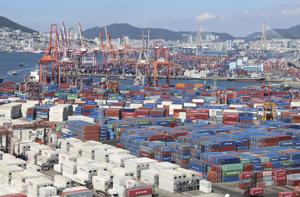President Donald Trump’s ambitious overhaul of American trade policy is encountering significant headwinds, not only from apprehensive global economies but also from a skeptical U.S. judiciary. The latest round of sweeping tariffs, intended to reshape international commerce, has immediately spurred intensive legal scrutiny and widespread economic uncertainty, challenging the very foundation of the administration’s assertive trade agenda.
At the heart of the legal dispute lies the appellate court’s profound skepticism regarding Trump’s authority to impose such expansive duties without explicit congressional approval. Judges specifically questioned the administration’s unprecedented interpretation and invocation of the International Emergency Economic Powers Act (IEEPA), highlighting that the statute makes no mention of tariffs and has never been applied in such a manner by any previous president.
Despite the judicial challenge, the executive order imposing new tariffs is now set to take effect on August 7, a slight delay from the president’s initial August 1 deadline, allowing for the harmonization of rates. This measure broadly applies to 68 countries and the 27-member European Union, with nations not explicitly exempted facing a baseline 10% tariff, signaling a significant shift in global trade dynamics and prompting widespread reevaluation of supply chains.
The ramifications are being felt across continents, particularly in North America. While Mexico secured a 90-day extension on trade negotiations, averting a threatened 30% tariff on many goods, Canada’s recent backing of Palestine statehood triggered a stern warning from President Trump, indicating potential repercussions for future trade agreements. These developments underscore the intricate interplay between geopolitical stances and economic policy under the current administration’s “America First” strategy.
In Europe and South America, the economic impact is equally tangible. Switzerland faces an uncertain future regarding a 31% tariff rate, while Brazil anticipates 35% of its exports to the U.S. will be affected by new duties, though some critical sectors like civil aircraft and certain raw materials remain exempt. The European Union, meanwhile, is proceeding on the assumption that a 15% tariff will soon apply to most of its exports, despite ongoing efforts to clarify the terms of a recent political agreement.
Asian nations are also navigating this evolving trade landscape. Pakistan recently finalized a new trade agreement with the U.S., signaling lower tariffs and new development opportunities, much to the satisfaction of its government. Conversely, India is currently assessing the potential adverse impact of new duties on its goods, with industry bodies expressing disappointment. South Korea, however, secured a trade deal that its president believes will strengthen both economic cooperation and military alliance with the United States, providing a measure of stability for its export environment.
The widespread uncertainty is compelling global businesses, from luxury sportscar manufacturers like Ferrari awaiting tariff confirmation to French skincare companies like Yon-Ka bracing for significant taxes on their U.S. market sales, to re-evaluate their strategies. These escalating global tariffs are not merely altering pricing structures and supply chain logistics but are fundamentally reshaping international economic relations and alliances, leaving industries worldwide to contend with a new, costlier reality.






Leave a Reply